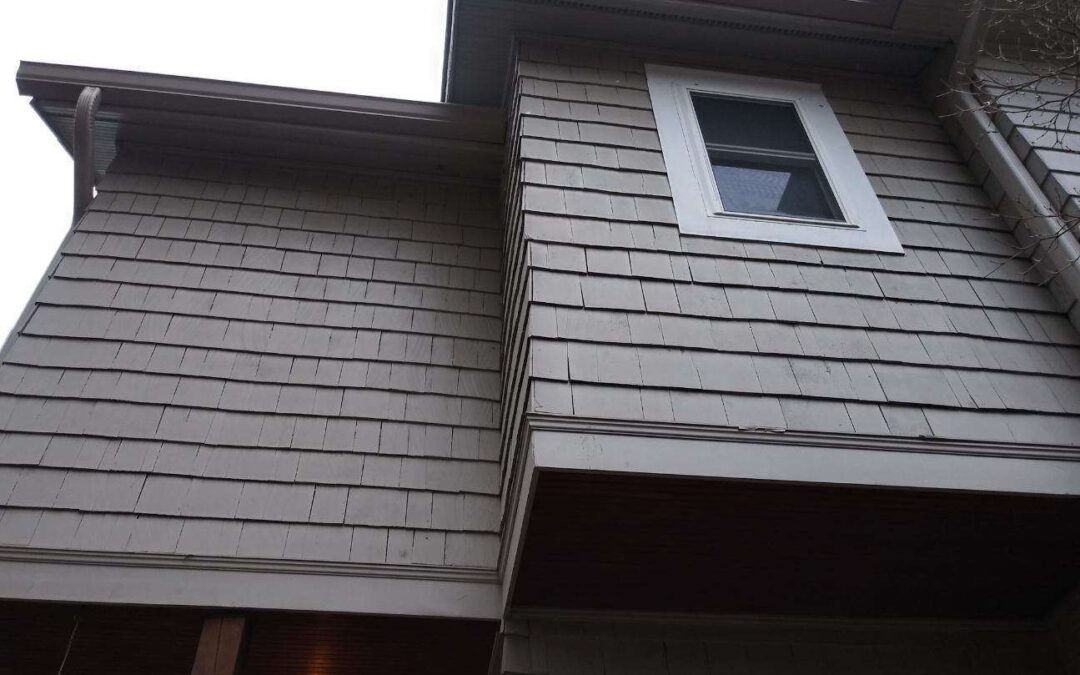Wood soffit is a critical element in your home’s exterior, offering both functional benefits and aesthetic appeal. In this comprehensive guide, we explore the ins and outs of wood soffit repair and replacement, from identifying common issues to exploring repair techniques and materials. This informational post is provided solely to educate homeowners in Louisville, KY, and is brought to you by Cardinal Gutters.
Understanding Wood Soffit and Its Importance
The soffit is the horizontal board that covers the underside of your roof’s overhang. It serves multiple vital functions:
- Enhanced Ventilation: Proper soffit installation promotes air circulation in your attic, which helps to control moisture levels and reduce the risk of mold.
- Protection: Soffit shields the structural components of your roof from the elements, minimizing the potential for water damage and decay.
- Curb Appeal: A well-maintained soffit adds a refined, finished look to your home, enhancing overall curb appeal.
By understanding these key roles, you can appreciate the importance of timely maintenance and repair.
Recognizing Signs of Soffit Damage
Regular inspections of your wood soffit can help you catch issues early. Be on the lookout for the following common signs of damage:
- Cracks and Splitting: Changes in temperature and weather conditions can cause the wood to crack or split over time.
- Rot and Decay: Prolonged exposure to moisture may lead to wood rot, compromising both the look and integrity of the soffit.
- Pest Infestation: Damaged or decaying soffit may attract pests such as termites or carpenter ants.
- Loose Fasteners: Nails or screws may become loose, reducing the stability of the soffit.
- Discoloration: Fading or uneven color can indicate water damage or excessive UV exposure.
Timely detection of these issues can help prevent more extensive damage and prolong the lifespan of your soffit.
A Step-by-Step Guide to Wood Soffit Repair
For homeowners interested in a DIY approach, here’s a detailed process for repairing wood soffit:
1. Ensure Safety
- Wear Protective Gear: Use gloves, safety glasses, and a dust mask.
- Stable Ladder Use: Always ensure your ladder is secure and on a flat surface when accessing the soffit.
2. Inspect and Assess the Damage
- Thorough Examination: Look for areas with visible rot, insect damage, or loose fasteners.
- Determine the Extent: Decide if the damage is isolated enough for a repair or if a full replacement is necessary.
3. Removing Damaged Sections
- Tools Needed: Gather a pry bar, hammer, and reciprocating saw.
- Careful Removal: Gently remove the compromised sections without affecting adjacent intact areas.
4. Preparation for Repair
- Clean the Area: Remove debris and old material for a smooth working surface.
- Precise Measurements: Accurately measure the removed area to cut replacement wood that fits perfectly.
5. Installation of New Wood
- Secure Fastening: Attach the new wood using weather-resistant nails or screws, and consider construction adhesive if needed.
- Sealing: Apply a high-quality sealant or paint to protect the new wood from moisture and UV damage.
6. Final Inspection and Touch-Up
- Review the Repair: Ensure that the new section blends seamlessly with the existing soffit.
- Additional Protection: If necessary, add an extra coat of sealant or paint to ensure longevity.
When to Opt for Full Replacement Over Repair
Sometimes, repair may not be sufficient, and a full replacement becomes the better option:
- Extensive Damage: If large sections of the soffit are affected by rot or insect damage, replacement might be necessary.
- Aging Soffit: Over time, even well-maintained wood can deteriorate, making replacement a more viable long-term solution.
- Improved Functionality: Replacing the soffit with newer, more durable materials can enhance ventilation and overall energy efficiency.
Evaluating the condition of your soffit can help you decide the best course of action.
Materials and Techniques for Soffit Replacement
Selecting the right material is crucial for a successful soffit replacement. Here are the primary options:
Traditional Wood Soffit
- Pros: Offers a timeless look and is relatively easy to repair.
- Cons: Requires regular maintenance and is vulnerable to moisture and pest damage.
Composite Soffit
- Pros: More durable, resistant to moisture, and requires less maintenance over time.
- Cons: Typically comes with a higher upfront cost and may not have the same classic appearance as wood.
Best Installation Practices
- Panel Overlap: Ensure that replacement panels overlap adequately to prevent water infiltration.
- Integrated Ventilation: Consider installing vented soffit panels to improve attic airflow.
- Precision Cutting: Accurate measurements and cutting are vital to achieving a uniform and secure fit.
These techniques help ensure that your replacement soffit not only looks great but also performs effectively.
Maintenance Tips for Long-Lasting Wood Soffit
Regular maintenance is key to extending the lifespan of your wood soffit. Here are some practical tips:
- Seasonal Inspections: Check your soffit at least twice a year, especially after severe weather events.
- Gentle Cleaning: Clean the soffit with a mild detergent solution to remove dirt and prevent mold growth.
- Reapply Protective Coatings: Regularly refresh the sealant or paint to keep the wood protected from moisture and UV damage.
- Trim Nearby Vegetation: Keep tree branches or shrubs away from the soffit to avoid physical damage.
- Prompt Repairs: Address minor issues immediately to prevent them from escalating into more severe problems.
Frequently Asked Questions (FAQs)
What is the primary function of a wood soffit?
The soffit helps ventilate the attic, protects structural components from the elements, and enhances your home’s exterior appeal.
How can I determine if my soffit needs repair or replacement?
Look for signs like cracking, rot, pest infestation, and loose fasteners. Minor issues may be repairable, while widespread damage typically necessitates replacement.
Is DIY repair a feasible option for wood soffit maintenance?
Many homeowners can manage minor repairs with the right tools and precautions, but extensive damage may require a professional evaluation.
What are the advantages of using composite materials for soffit replacement?
Composite materials offer greater durability and resistance to moisture and pests, often reducing the frequency of maintenance compared to traditional wood.
How frequently should I inspect my soffit?
It’s advisable to inspect your soffit at least twice a year—commonly in the spring and fall—to detect any early signs of damage.
Conclusion
Maintaining your wood soffit through regular repair or timely replacement is essential for preserving your home’s structural integrity and appearance. This guide offers an in-depth look at the processes and considerations involved in wood soffit maintenance, providing homeowners in Louisville, KY with the knowledge needed to make informed decisions. Cardinal Gutters is dedicated to sharing valuable information to help you protect and enhance your home’s exterior—purely for educational purposes.

